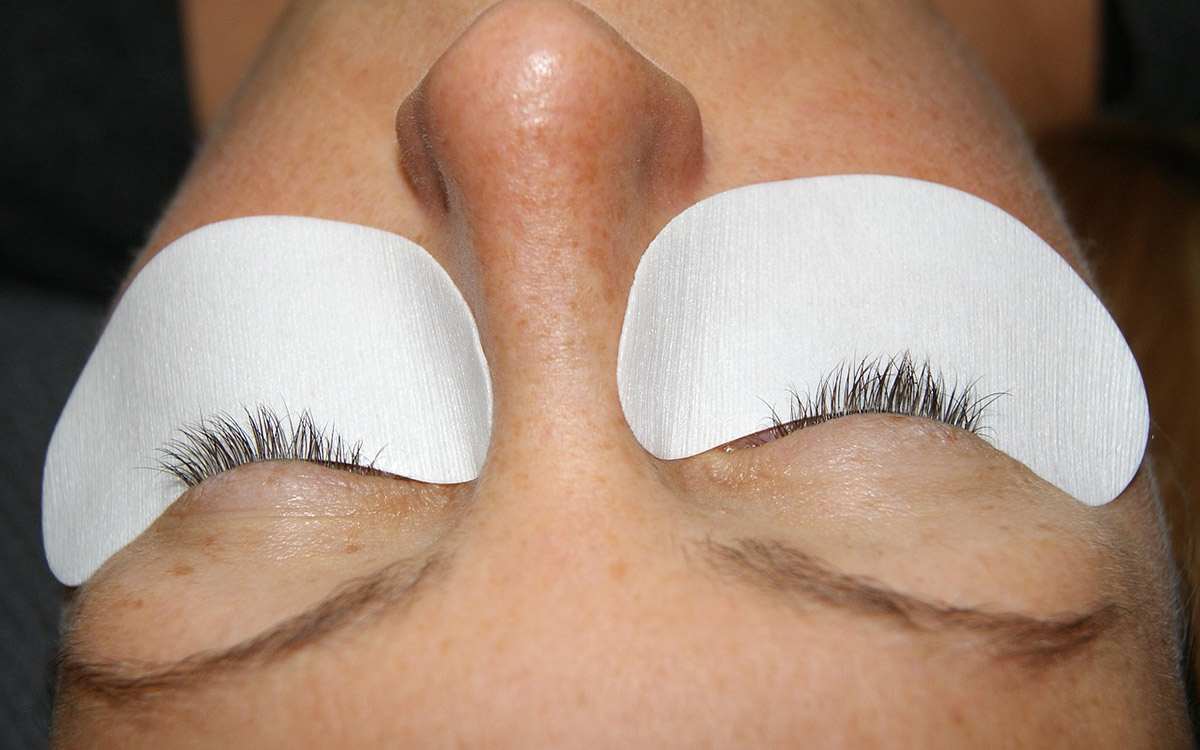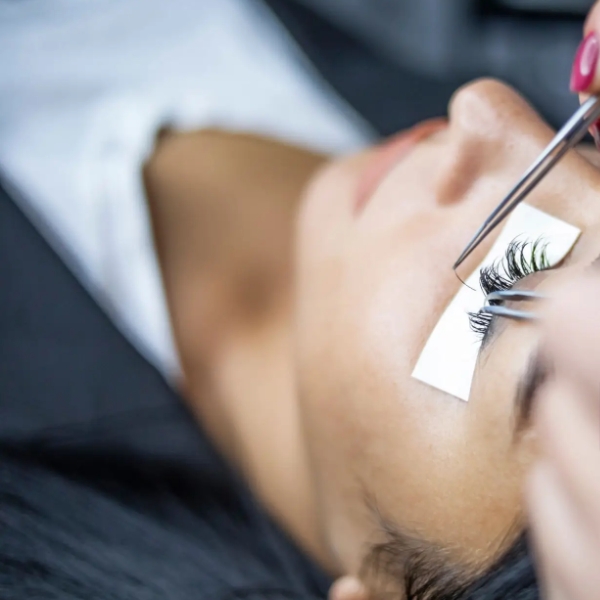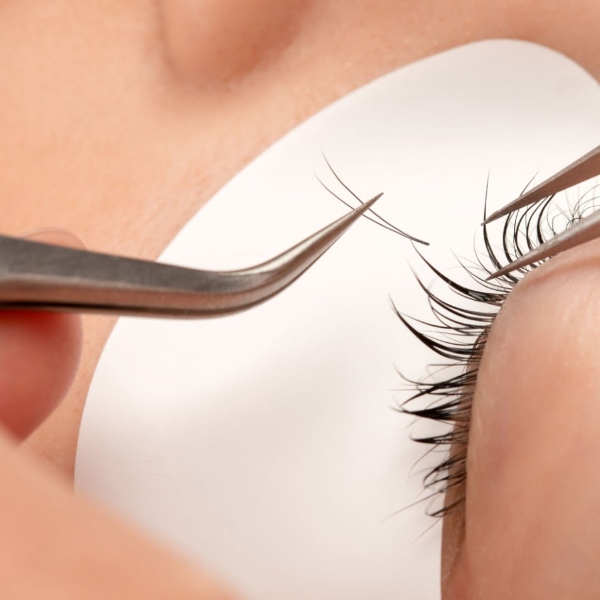If you’re an eyelash artist, you know that the patch test is an important part of your job. It helps ensure that clients won’t experience any adverse reactions to the lash adhesive you’re using. In this blog post, we’ll go over everything you need to know about the patch test for eyelash adhesive. We’ll explain why it’s necessary, how to properly perform it, and what to do if your client has an adverse reaction. Read on to learn more about the importance of the patch test for eyelash adhesive.
- 1 What is a patch test?
- 2 Why is it important?
- 3 How to Perform a Patch Test?
- 4 Reading the Results of a Patch Test
- 5 When should clients do a patch test?
- 6 What is the duration of a patch test?
- 7 Are there any risks associated with patch testing?
- 8 What should you do if you have a reaction?
- 9 What if the client is allergic?
- 10 How often do you need a patch test for lashes?
- 11 Conclusion
What is a patch test?
A patch test is an important part of the eyelash extension application process. It is a safety measure to ensure that the adhesive used will not cause any adverse reactions on the client’s skin. It is important to patch-test any new type of adhesive, even if it has the same brand name as an adhesive you have used before.
The patch test should be conducted on the skin near the eye, but not directly on the eyelid itself. This is because the skin around the eye is more sensitive and prone to irritation than other areas. During the test, a small amount of adhesive is applied to a piece of tape and placed on the skin for a few minutes. After this time, the tape is removed and the area is checked for any signs of irritation such as redness, itching, or burning. If there are no signs of irritation after 24 hours, it is safe to proceed with using the adhesive.
It is important to note that if any signs of irritation occur during the patch test, the adhesive should not be used and another one should be tried. It is also important to follow all instructions provided by the manufacturer when conducting a patch test, as different brands may require different testing procedures.
The patch test is a critical step in ensuring that eyelash extensions are applied safely and effectively. By performing a patch test prior to application, you can reduce the risk of irritation and discomfort for your clients.
Why is it important?
As an eyelash artist, you have a responsibility to your clients to ensure their safety and comfort during the eyelash application process. To do this, it is essential to conduct a patch test for the eyelash adhesive you use. The patch test ensures that the adhesive does not cause any irritation or allergic reactions for your client.
The patch test is also important because it allows you to identify any potential issues with the adhesive. For example, you might notice that the adhesive does not have a strong enough hold, or that it has an unpleasant smell. By conducting a patch test before using the adhesive on a client, you can make sure that you’re using the best product possible. If there are any issues with the adhesive, then you will be able to address them right away.
A well-conducted patch test can help you avoid problems such as glue getting in your client’s eye (ouch!), lash extensions coming off prematurely, or lash extensions being too hard to remove. A poorly conducted patch test might mean that your client will experience discomfort during their appointment due to an allergic reaction. Not only would this be uncomfortable for them, but it would also mean less time for both of you! That’s why we recommend a full 24-hour patch testing period whenever possible.
How to Perform a Patch Test?
If you are a professional eyelash artist, then you know how important it is to perform a patch test before using any type of adhesive on your client’s eyes. The patch test for eyelash adhesive is a quick and simple procedure that can help you determine if the glue you’re using will cause an allergic reaction or other irritation in your client. Here are a few methods for performing a patch test for lash extensions as a lash artist:
1. Apply a small amount of eyelash extension adhesive to the outer corner of the eyes, where the furthest lashes are located.
2. One of the client’s ears should have a modest bit of eyelash glue applied behind it. Since the skin is sensitive there, any reaction from a client would be rather visible.
3. To determine if the patient will have a reaction, place 3–4 lashes on the outside corner of their eyes. Wait 24 hours.
4. If there is no response after 24 hours, continue with the application.
5. Ask the client to sign a liability disclaimer, which acknowledges that they take responsibility for any reactions to the eyelash glue if they decline to undergo the patch test.

Reading the Results of a Patch Test
If you are planning to use eyelash adhesive, it’s important to know how to read the results of your patch test correctly. Here are some tips to help you interpret the results of a patch test:
1. Check For Reactions Immediately – When you have applied the adhesive to your skin and let it sit for the recommended time, check the area immediately to see if there is any redness, swelling, or other signs of irritation.
2. Wait 24 Hours – After you have done the patch test and checked for reactions, wait 24 hours to make sure that no other reactions occur. If any signs of a reaction show up after 24 hours, the adhesive may not be suitable for use.
3. Look for Allergic Reactions – Allergic reactions to eyelash adhesive can take up to 48 hours to show up, so it’s important to look out for any signs of itching, redness, or swelling after this time period has elapsed. If you experience any of these symptoms, discontinue the use of the product immediately.
By following these tips, you can make sure that you are able to properly read the results of your patch test and determine if an eyelash adhesive is right for you. Remember, it’s always better to be safe than sorry when it comes to applying anything near your eyes!
When should clients do a patch test?
If you’re considering wearing false eyelashes or applying for individual eyelash extensions, one of the most important steps you should take before doing so is to do a patch test. A patch test is a simple process of testing the eyelash adhesive on a small part of your skin to make sure that it won’t cause any irritation or allergic reaction. Here’s what you need to know about patch tests and why they are essential for anyone considering false eyelashes or extensions.
A patch test should always be done before using any new adhesive on your eyes. This is especially important if you have sensitive eyes or allergies, as these can be exacerbated by the use of adhesives. The patch test involves placing a small amount of adhesive on the inside of your wrist and waiting for at least 24 hours to see if there is any irritation or allergic reaction. If you experience any symptoms such as redness, swelling, itching, or burning, then you should avoid using that particular adhesive.
It is also important to do a patch test each time you switch adhesives or after taking a break from wearing false eyelashes or extensions. This will ensure that your skin won’t become sensitized to the adhesive and that you don’t have an unexpected reaction when you re-apply them.
When you do a patch test, make sure that the area on your wrist where the adhesive was applied is completely clean and dry before application. You should also make sure to use only a small amount of the adhesive, as too much could lead to an exaggerated reaction.
In conclusion, doing a patch test before applying eyelash adhesive is an important step in avoiding potential irritation or allergy flare-ups. Always take the necessary precautions and make sure to do a patch test each time you switch adhesives or take a break from using them. Doing this will help ensure that your eyelash application experience is safe and successful!
What is the duration of a patch test?
The test itself shouldn’t last more than 30 to 45 minutes, however, we advise that you check with a professional before beginning the patch test procedure. As was already mentioned, this involves priming your client’s natural lashes as usual before treatment and applying lashes through their lash line. Don’t worry, this won’t look odd because you’ll be using very fine extensions that are the same length as your client’s natural lashes, so they won’t even be noticeable!
Are there any risks associated with patch testing?
When it comes to patch testing for eyelash adhesive, it’s important to be aware of the potential risks associated with this procedure. Patch testing is a process where a small amount of adhesive is applied to the skin near your eye to check for any allergies or sensitivities before using a full-strength adhesive. It’s a great way to ensure that you’re using the right product for you, but it can also come with some risks.
The first risk of patch testing is potential skin irritation. The area around your eyes is delicate, so applying a strong adhesive directly onto the skin could lead to redness, itching, or burning. Make sure you use the smallest amount possible when patch testing, and never apply it directly to the eyelid itself.
Additionally, there’s the risk of an allergic reaction to the adhesive. Even if you’ve had success with one brand of eyelash adhesive in the past, that doesn’t mean you won’t be sensitive to other adhesives. A patch test is the best way to make sure that you don’t have an allergic reaction to a new product before you use it at full strength.
Finally, it’s also important to remember that patch testing won’t always be 100% effective. If you’re still unsure about whether a product is safe for you, talk to your doctor or an ophthalmologist to get their professional opinion.
In conclusion, patch testing is an important part of using eyelash adhesive safely. However, it’s important to be aware of the potential risks associated with this process and take extra precautions to minimize them.

What should you do if you have a reaction?
If you experience any sort of reaction to an eyelash adhesive patch test, it’s important to take the proper steps to ensure that your eyes remain safe. Here are some things you can do:
1. Immediately remove the lashes and adhesive. Gently remove the lashes, taking extra care not to tug or pull on your natural lashes. Then, use a Q-tip dipped in a gentle makeup remover to gently remove any remaining adhesive.
2. Rinse with cool water. After removing the lashes and adhesive, rinse your eyes with cool water to help soothe any irritation and flush out any residue.
3. Apply a cold compress. Place a clean cloth dipped in cold water over your eyes for 10-15 minutes. This will help reduce redness and swelling.
4. Visit your doctor. If you’re still experiencing any symptoms such as burning, itching, or redness after rinsing your eyes and applying a cold compress, you should visit your doctor right away. They may prescribe medications to help alleviate symptoms and provide additional advice.
By following these steps, you can reduce any discomfort you may have experienced during a patch test. However, if you’re ever unsure about using a particular product or have any doubts about whether you should use an adhesive, it’s best to speak with a professional first.
What if the client is allergic?
When it comes to eyelash extensions, one of the most important things to consider is a patch test. A patch test ensures that your client is not allergic to the adhesive you are using on their lashes. This is an important step to take in order to make sure your clients have a safe and comfortable experience when getting eyelash extensions.
But what should you do if your client has an allergic reaction? It’s essential to remember that everyone’s skin is different and can react differently to different products, so it’s important to be aware of this. If your client does have an allergic reaction to the adhesive, it’s important to remove the lash extensions as soon as possible and inform them of the necessary aftercare steps. Make sure to keep in mind that some allergies can take days or weeks to appear, so it’s important to be mindful of any reactions your client may experience even after the patch test.
If your client does experience any allergic reactions, it’s best to advise them to visit a doctor for further information. Additionally, make sure to replace any of the eyelash extensions that have been removed due to the allergy with a different adhesive to ensure that they don’t experience any further reactions.
It’s always best to err on the side of caution when dealing with potential allergies. Patch tests are an essential part of the eyelash extension process and can help prevent any unwanted reactions from occurring.
How often do you need a patch test for lashes?
So, how often do you need a patch test for lashes? The answer depends on several factors, including your personal allergies and reactions to the product and any other products that you may be used in conjunction with the lash adhesive.
For most people, a patch test should be done once a month. This will allow you to make sure that you’re not having any adverse reactions or sensitivity to the product. If you’re using a new brand of eyelash adhesive, or if you’ve changed your routine in any way (like using different products or having a different application process), then it’s important to do a patch test again to be sure that your eyes won’t have any problems with the new product.
Conclusion
In conclusion, it is important to be aware of the potential risks associated with eyelash adhesive and how to properly perform a patch test. Patch tests are an essential step in the process of applying for eyelash extensions, as they can help prevent any potential irritation or adverse reactions. They only take a few minutes to complete and can ensure that you have a safe and successful experience when applying for eyelash extensions. When done properly, patch tests can also provide peace of mind that you are using the right product for your individual needs. In order to find out if a certain type of glue is suitable for you, read the label carefully and see what precautions there may be listed on the packaging. If you notice anything concerning, we recommend that you refrain from purchasing it until consulting with your physician or dermatologist first.
When doing a patch test before applying for eyelash extensions, remember to avoid using expired glue! Older products often don’t adhere well or contain bacteria that could cause skin infections and irritations.
After completing all steps outlined above, make sure not to touch the closed eyes before opening them in order to avoid eye infections which could result in blindness!






